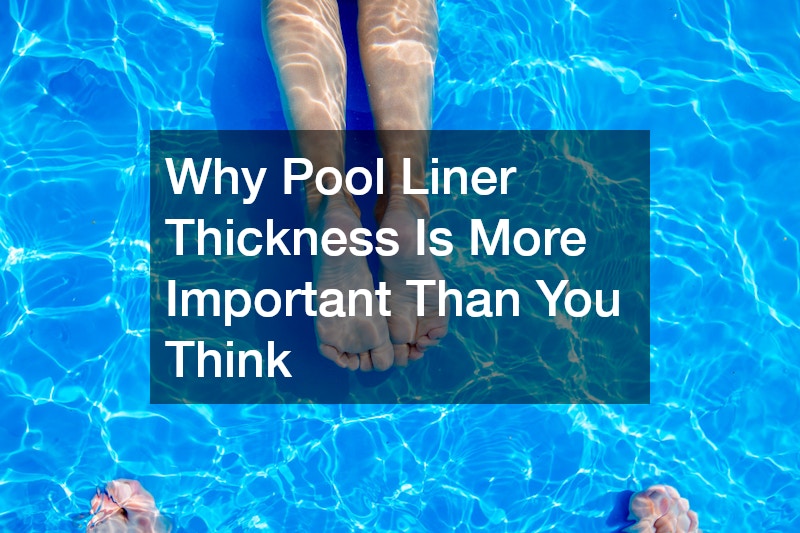
In this article, we will explore the significance of pool liner thickness and how it impacts the overall quality, durability, and maintenance of your swimming pool. Whether you're installing a new pool or replacing an old liner, understanding this one detail can make a big difference in how well your pool performs over time.
Pool liner thickness isn't just a technical specification—it directly affects how much upkeep your pool will require, how long your liner will last, and how enjoyable your swim experience will be. It can also influence cost, both upfront and down the road. From withstanding sharp objects to resisting sun damage and chemical exposure, the right liner thickness can offer peace of mind and better long-term value.
Video Source
We’ll break down the most common thickness options and what to consider when choosing between them.
Understanding the standard thickness of pool liners can help pool owners make informed decisions about their liners and the longevity of their pools.
Typically, pool liners come in various thicknesses, with the most common being 20 mil, 27 mil, and 30 mil. The thickness directly correlates with durability and performance, with thicker liners often providing better protection against elements like UV rays, pool chemicals, and daily wear and tear.
Choosing the right thickness requires consideration of various factors. For instance, the climate in which the pool is located, frequency of use, and the surrounding environment all play a critical role in determining the appropriate liner thickness for optimal performance and peace of mind.
The thickness of the pool liner plays a pivotal role in its durability and resistance to tears, punctures, and wear over time.
A thicker liner generally exhibits superior resistance to damage, especially in high-traffic areas or pools that may have rough surfaces. This can drastically reduce the chances of needing repairs or replacements, making it a better long-term investment for pool owners.
Furthermore, liners that are thicker tend to hold up better against sharp objects, which is crucial in maintaining the integrity of the pool. This durability can also affect the overall lifespan of the pool, allowing for prolonged enjoyment without substantial additional costs.
In addition, thicker liners are less likely to become brittle over time due to sun exposure or fluctuating temperatures. Thinner liners may crack, peel, or stretch unevenly after just a few seasons, especially in harsher climates. A more robust liner helps prevent these issues, offering better overall protection for the pool structure itself. If you want to spend more time swimming and less time patching or replacing, a thicker liner is often the smarter choice.
This section discusses the various advantages of investing in a thicker pool liner, such as improved longevity and reduced maintenance costs.
One of the most significant advantages of a thicker pool liner is its extended lifespan. While the initial cost may be higher, the longevity of thicker liners often offsets this by reducing the frequency of replacements, saving money over time.
In addition to durability, thicker liners also provide better insulation. This can lead to warmer water temperatures and may result in lower heating costs, enhancing the overall swimming experience. The additional thickness also minimizes water loss due to evaporation, making maintenance more manageable.
Here, we will explore the potential effects of liner thickness on water chemistry and overall pool maintenance strategies, so you can choose the best option to suit your needs.
Interestingly, the thickness of a pool liner can also influence the chemical balance of pool water. Thicker liners tend to provide a more stable surface for maintaining pool chemistry, which can reduce the amount of chemicals needed to keep the water clear and safe.
Moreover, a thicker liner may also contribute to a smoother surface, reducing algae growth and making it easier to clean. This can lead to better overall water quality, ensuring a healthier swimming environment and giving peace of mind to pool owners.
In summary, understanding pool liner thickness goes beyond just aesthetics—it has significant implications for durability, maintenance, and pool quality. Making the right choice in liner thickness is crucial for any pool owner.
